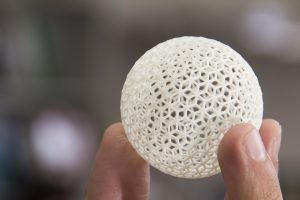 3D printing was once viewed as nothing more than science fiction with no real practical use, but that’s beginning to change thanks to recent advancements made in this ever-growing industry.
3D printing was once viewed as nothing more than science fiction with no real practical use, but that’s beginning to change thanks to recent advancements made in this ever-growing industry.
Among the most notable advancements in 3D printing is the application of a new type of ink that’s made of rust and metal powder. Researchers from Northwestern University say they’ve pioneered a new method for printing three-dimensional objects which uses link inks and traditional furnaces. Up until now, current methods have restricted 3D printing to using expensive lasers. Although effective, it significantly increases the cost of production as well as use. But researchers from Northwestern University say their new method does not use lasers, rather it uses a cheaper and more efficient furniture and ink combination.
The study’s researchers explained that the new 3D printing method is capable of working on a variety of metals, alloys, oxides and more. Why is this important? Well, traditional methods are limited in terms of which metals can be printed, as well as their respective shape, size and architecture. The new method seeks to improve the 3D printing industry by offering a cheaper and more versatile method.
So, how does it work? The powder is used to create layers, and as these layers pile up, it eventually transforms the object into a 3D object. Unlike existing methods, however, the ink is created from a combination of rust and metal powder. This subsequently lowers the cost of use while improving efficiency and output times. If there’s any unused powder remaining is removed so that it doesn’t affect the appearance or structural integrity of the object.
“Small and large volumes of metal-oxide, metal, and metal compound 3D-printable inks are synthesized through simple mixing of solvent, powder, and the biomedical elastomer, polylactic-co-glycolic acid (PLGA),” explained researchers in the study’s abstract.
This research was published in the journal Advanced Functional Materials by Northwestern University.
What do you think about this new 3D printing technique?
